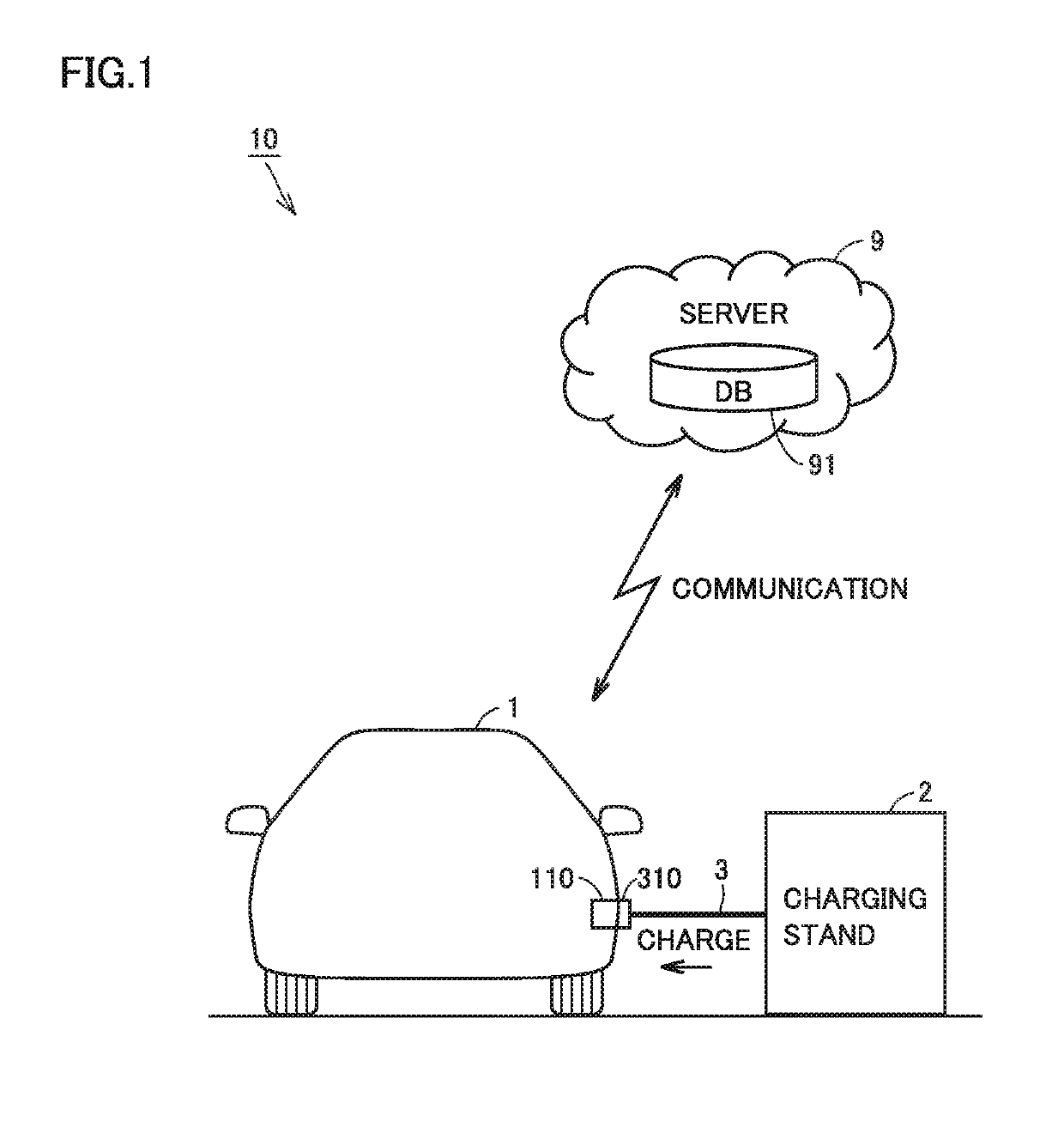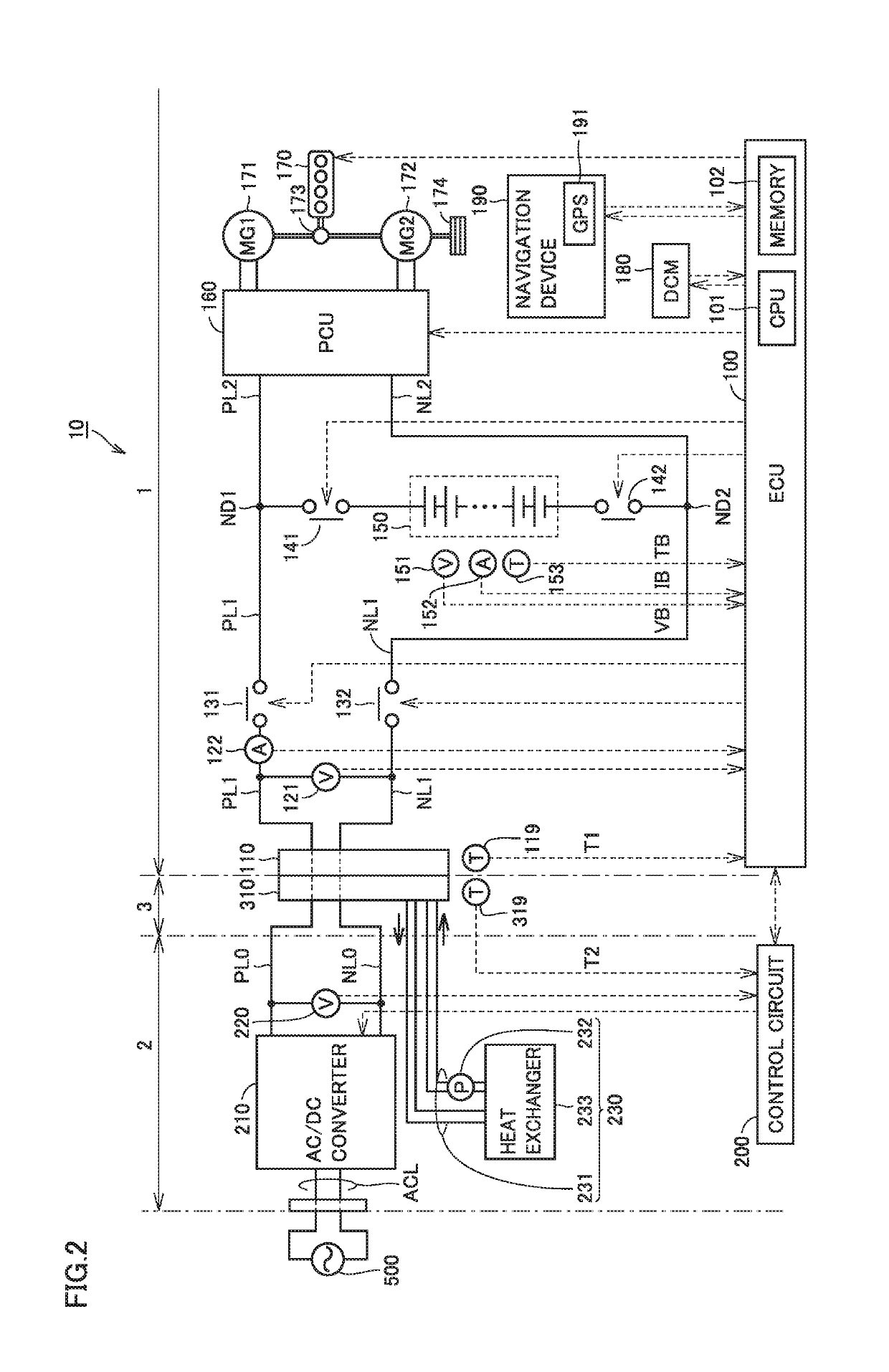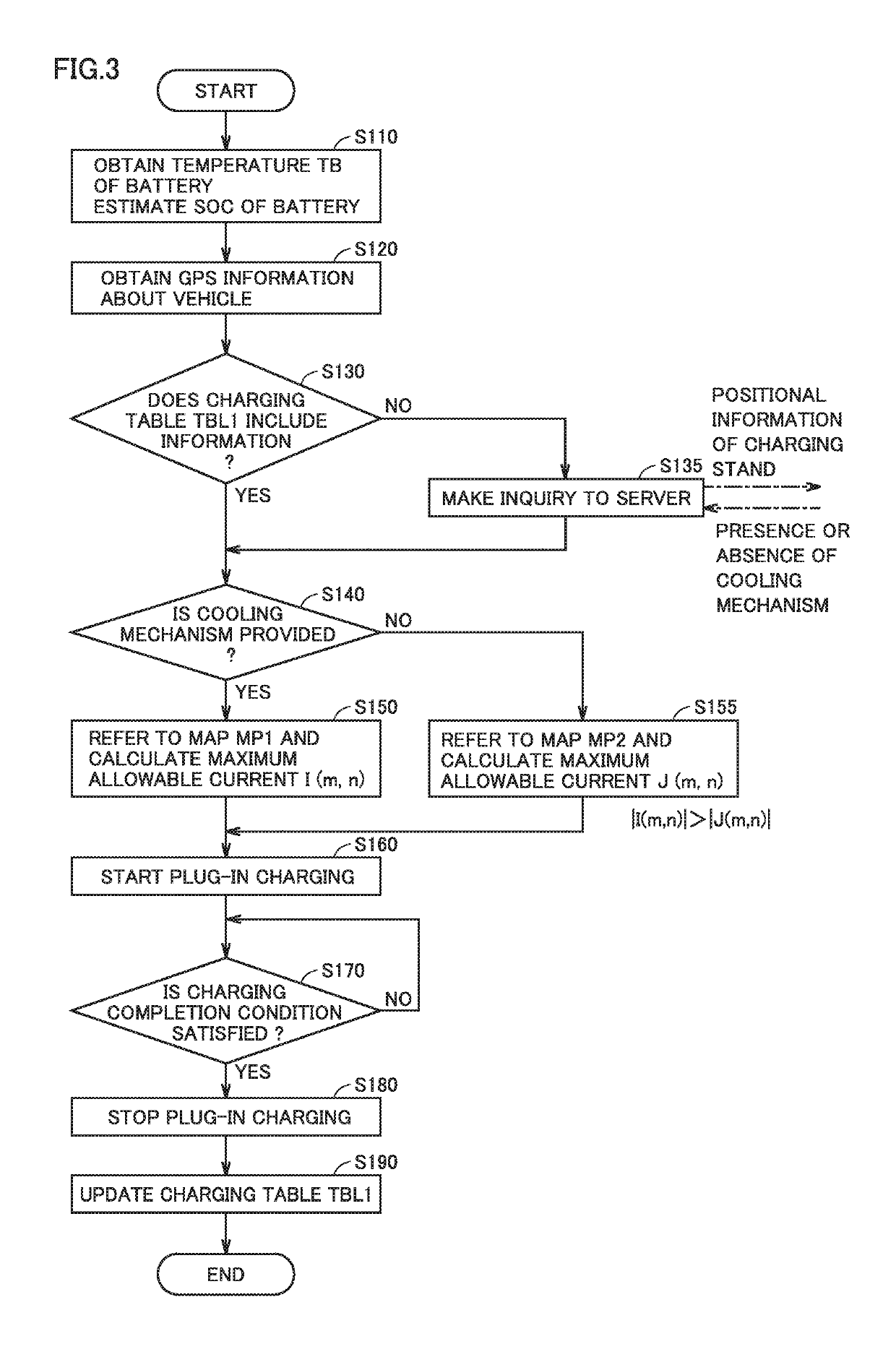Vehicle and method of charging vehicle
a charging method and vehicle technology, applied in the direction of charging stations, electric propulsion mounting, charging cables, etc., can solve the problems of excessive temperature at the contact portion, limiting the charging power of the charger mounted in the vehicle, and affecting the service life of the vehicle, so as to shorten the charging time and improve the user's convenience. , the effect of shortening the charging tim
- Summary
- Abstract
- Description
- Claims
- Application Information
AI Technical Summary
Benefits of technology
Problems solved by technology
Method used
Image
Examples
first embodiment
[0031]
[0032]FIG. 1 is a diagram schematically showing the entire configuration of a charging system according to the first embodiment of the present disclosure. Referring to FIG. 1, a charging system 10 includes a vehicle 1, a charging stand 2, a charging cable 3, and a server 9.
[0033]Vehicle 1 and charging stand 2 are configured to be electrically connectable to each other through charging cable 3. Vehicle 1 is a user's (not shown) vehicle, and may be a plug-in hybrid vehicle, for example. Vehicle 1 may be an electric vehicle as long as it is configured to allow plug-in charging.
[0034]FIG. 1 shows the state where plug-in charging is performed for vehicle 1 by charging stand 2. Charging stand 2 is a public charging stand (or a charging station), for example. Thus, plug-in charging by charging stand 2 may be performed for a vehicle (not shown) other than vehicle 1. Furthermore, plug-in charging for vehicle 1 may be performed by a charging stand (not shown) other than charging stand 2...
second embodiment
[0089]The first embodiment has been described with regard to an example of the configuration in which the position of the target charging stand is specified using the GPS information of vehicle 1 and the maximum allowable current is switched based on the positional information about the charging stand. However, it is not indispensable to use the positional information about the target charging stand for specifying the target charging stand. The second embodiment will be described with regard to the configuration in which the maximum allowable current is set through the communication between vehicle 1 and the target charging stand. In the second embodiment, a charging table TBL2 different from charging table TBL1 is stored in memory 102 of ECU 100. The configurations of the target charging stand and the vehicle in the second embodiment other than the configurations described above are basically the same as those shown in FIG. 2, and therefore, the description thereof will not be repe...
PUM
 Login to View More
Login to View More Abstract
Description
Claims
Application Information
 Login to View More
Login to View More - R&D
- Intellectual Property
- Life Sciences
- Materials
- Tech Scout
- Unparalleled Data Quality
- Higher Quality Content
- 60% Fewer Hallucinations
Browse by: Latest US Patents, China's latest patents, Technical Efficacy Thesaurus, Application Domain, Technology Topic, Popular Technical Reports.
© 2025 PatSnap. All rights reserved.Legal|Privacy policy|Modern Slavery Act Transparency Statement|Sitemap|About US| Contact US: help@patsnap.com



